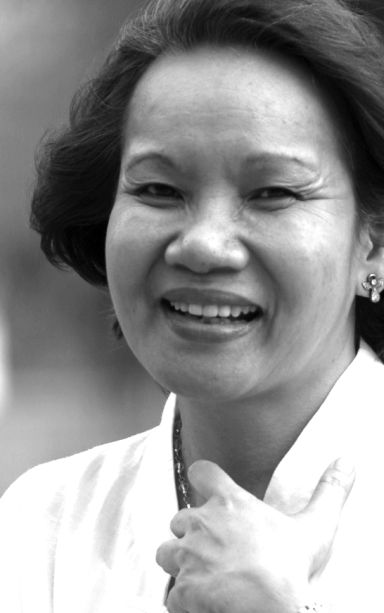
LOGARTA
For Gabi-i sa Kabilin we focused on the Pedro Calungsod Shrine.
Here Mary Rose Villacastin-Maghuyop with the students of Our Lady of Joy Learning Center had a short presentation on the Period of the Balangay. Appropriately it started with the geographic reality of being a part of an archipelago with the waters and the islands shaping the people’s lives.
They were close to the seas and the fishes there.
They were fishers and swimmers.
There was a dance of the waves and a dance to display the fishes. In class, I remind the students that the song, “Bugsay” is often the first song that a child learns: “Bugsay, Bugsay, kiling kiling diyutay; Bugsay, bugsay sa barotong gamay!”
The performance was mainly body-movement, music, and an informative narration by Mary Rose with William Henry Scott’s Barangay as reference.
What struck me most was the declaration that our early ancestor loved to sing and were often singing.
Perhaps this explains why Filipinos, Cebuanos are such good singers! I watched Tawag ng Tanghalan the other day and observed how Vice Ganda, Eric Santos, and the other judges appreciated the millennial Cebuana singer.
Her choice of song and singing style were so full of hope, the entire experience was very refreshing.
My group, of course, started with the shrine itself, went to the exhibit room of the memorabilia, and then that drizzly evening prayed at Eucharistia guided by Sr. Easter.
She pointed the bell tower out and informed us that we could ring the bell three times if we had recently had answered prayers.
The three of us went into the bell ringing rite.
I had just recently had a problem for which I had prayed for earnestly that, of course, had been favorably answered.
Gabi-i sa Kabilin reminded me that we should integrate local history in our teaching especially of Social Studies and other subjects.
Educators in Cebu are blessed with several available materials. We have Museo Sugbo and there is a special room with artifacts on the early Asian Period.
The University of San Carlos Museum also has such materials of the same period, because their students and staff had been actively involved in archaeological research. The Town Histories are also available for our students.
This had been a collaborative project of the Cebu Provincial Government and the University of San Carlos.
Cebu Under the Spanish Flag, 1521-1896: An Economic Social History by Bruce Leonard Fenner devotes an entire chapter to the Early Asian Period of Cebu.
One of Fenner’s main sources for this period is Pigafetta and he explains: “Pigafetta’s reliability as an historical source is enhanced by the fact that as a member of the Magellan expedition, he had come to observe and describe Cebu rather than subjugate and colonize it.”
Since we are about to celebrate Cebu Business Month, we bring in these quotes: “When members of the Magellan expedition asked the ruler of Limasawa, a small island off the southern tip of Leyte, to direct them to a port where they could obtain food, the ruler mentioned three ports, but added that ‘Zubu was the largest and the one with most trade.’
Based on other sources, Fenner continues: “The prosperity of the port was based on an active entrepot trade that involved the exchange of Chinese trade articles with goods and products from Southeast Asia, other parts of the Philippine archipelago, and the island of Cebu.Chinese trade goods made up the bulk of the trade.”
He also points out that “In addition to conducting a lively trade with the Chinese, Cebu maintained commercial relations with parts of Southeast Asia. H. Otley Beyer estimated that one-third of the porcelains uncovered in the islands were of non-Chinese origin.”
Disclaimer: The comments uploaded on this site do not necessarily represent or reflect the views of management and owner of Cebudailynews. We reserve the right to exclude comments that we deem to be inconsistent with our editorial standards.




